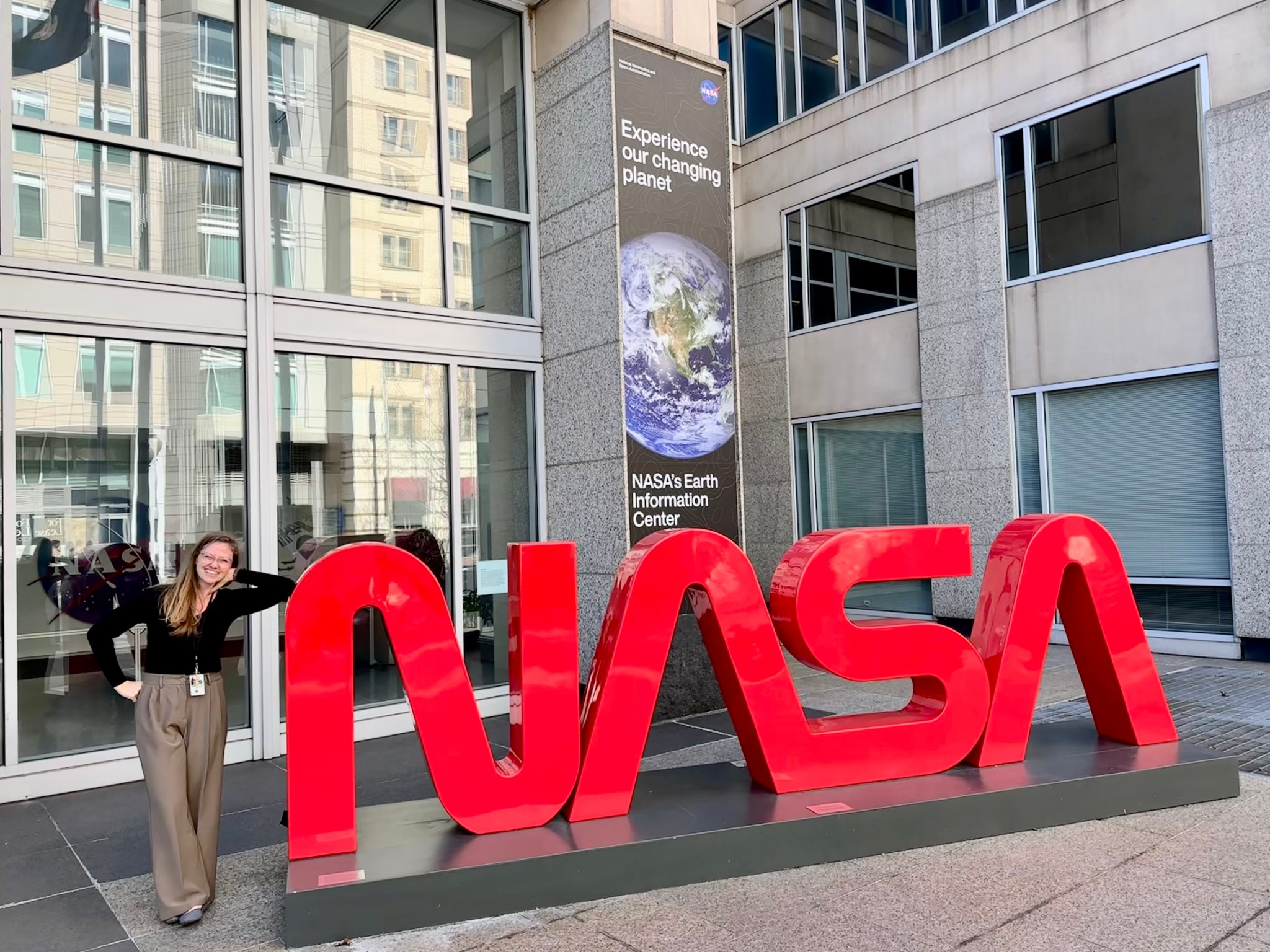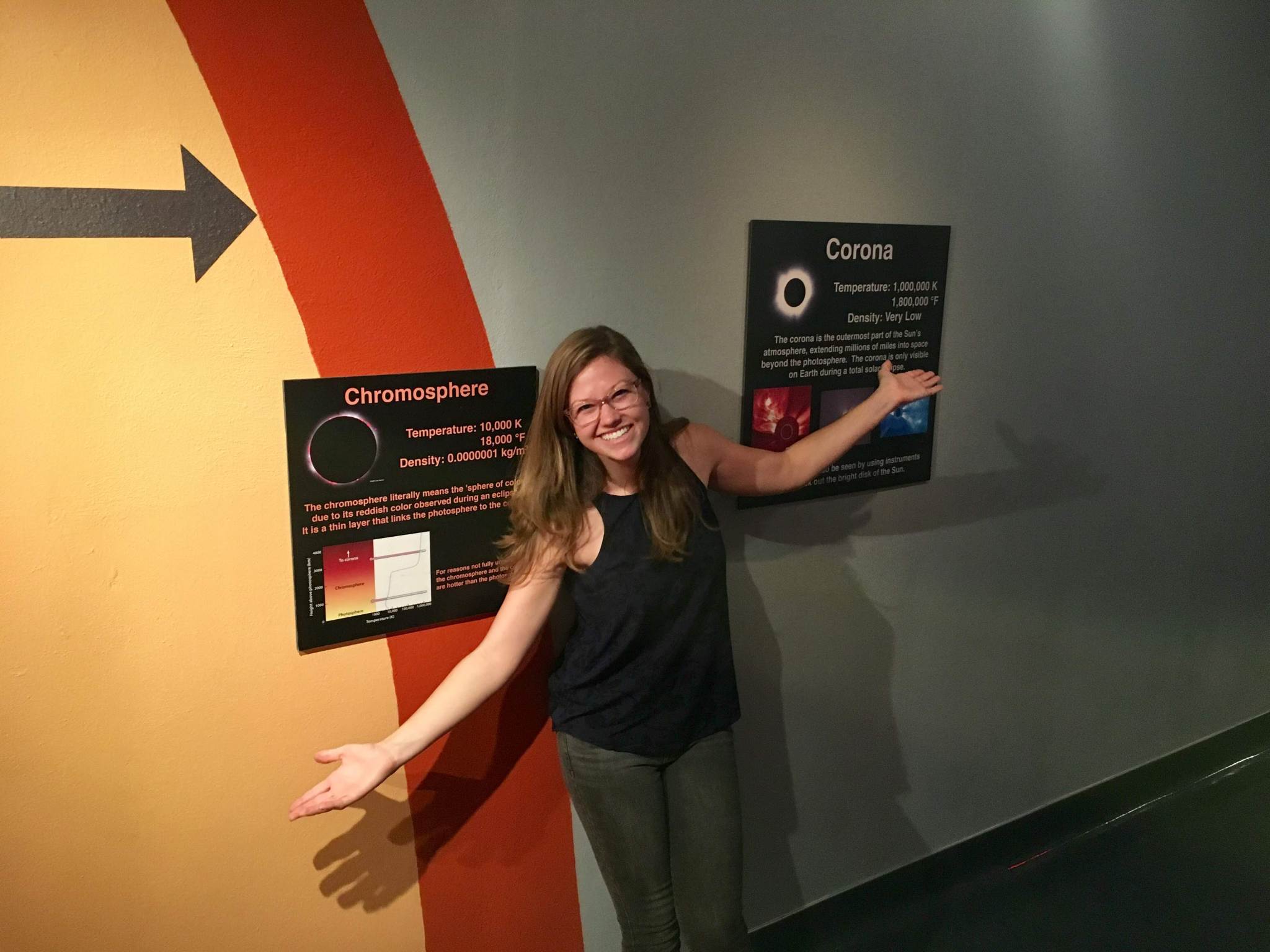6 min read
Knowing whether or not a planet elsewhere in the galaxy could potentially be habitable requires knowing a lot about that planet's sun. Sarah Peacock relies on computer models to assess stars' radiation, which can have a major influence on whether or not one of these exoplanets has breathable atmosphere.
Name: Sarah Peacock
Title: Assistant Research Scientist
Formal Job Classification: Astrophysicist
Organization: Exoplanets and Stellar Astrophysics Laboratory, Astrophysics Division, Science Directorate (Code 667)

What do you do and what is most interesting about your role here at Goddard?
My overarching research goal is to find habitable planets in other solar systems. To do this, I study the high-energy radiation that specific stars produce to help determine if life can exist on any earthlike planets that orbit them.
What is your educational background?
In 2013, I received a Bachelor of Arts in astrophysics from the University of Virginia. I received both my master's and doctorate degrees from the Lunar and Planetary Laboratory at the University of Arizona in 2016 and 2019, respectively.
What drew you to study the stars?
In high school, I took an astronomy class. We had a planetarium in our school and I had a wonderful teacher who inspired me to fall in love with the stars. She also showed us how many of the Harry Potter characters are drawn from the constellations and that spoke to my heart because I am a Harry Potter fan!
How did you come to Goddard?
I started at Goddard as a NASA post-doctoral fellow in July 2020, but I first saw the center the day before Goddard shut down due to COVID.
How does high-energy radiation show you what planets outside our solar system might be habitable?
High-energy radiation can cause a planet to lose its atmosphere. If a planet is exposed to too much high-energy radiation, the atmosphere can be blown off, and if there is no atmosphere, then there is nothing for life as we know it to breathe.
We cannot directly measure the specific radiation that I study, so we have to model it. The universe has so many stars, and almost all stars host a planet. There are approximately 5,500 confirmed exoplanets so far, with an additional 7,500 unconfirmed exoplanets.
I help identify systems that either have too much radiation, so planets in the habitable zone (the region around a star where liquid water could exist on a planet's surface) are probably lifeless, or systems that have radiation levels that are safer. Ultimately, my research helps narrow down the most likely systems to host planets that should have stable atmospheres.

Where does your data come from?
I predominately use data from the Hubble Space Telescope and from the now-retired spacecraft GALEX. My work itself is more theory-focused though: I create a modeled stellar spectrum across all wavelengths and use observations to validate my modeling.
What other areas of research are you involved in?
I am working with a team analyzing data from the James Webb Space Telescope to see if earthlike planets around M-type stars (a star that is cooler and smaller than the Sun) have atmospheres and, if so, what the composition of those atmospheres is. An exciting result from this work is that we may have detected water in the atmosphere of a rocky planet for the first time ever. However, we cannot yet distinguish with our current observations if that water comes from the planet or from spots on the star (starspots on this host star are cold enough for water to exist in gas form).
I am also helping manage a NASA Innovative Advance Concept (NIAC) study led by my mentor, Ken Carpenter, to work on the Artemis Enabled Stellar Imager (AeSI)






